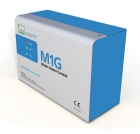Reducing operating costs of direct-fired water heaters

A new retrofit control technology is enabling enhanced control of direct fired water heaters to reduce energy costs
One of the most important aspects of designing a domestic hot water system that uses stored hot water is to ensure water temperatures are maintained. Typically this is achieved through a control strategy that routinely pasteurises the water by regularly heating it to 55°- 60°C when it is stored and ensuring that its temperature at the outlet is around 50°C.
In the case of direct-fired water heaters this procedure may create inefficiencies and lead to unnecessary energy costs. This is because when there is no demand for hot water from the building there will still be a gradual decline in temperature from standing losses found primarily in the secondary circuit i.e. the water being pumped to the taps. As the temperature falls the burner will fire just to recover these standing losses and restore the temperature to the set point. This is a situation that the majority of building services engineers are already familiar with but have hitherto been unable to prevent.
Clearly the ideal control situation is to prevent this wasted energy consumption and costs while ensuring that the stored water temperature is not compromised. A new retrofit control technology enables just that.
At the heart of this new technology, designated M1G, is the ability in real time to differentiate between a true demand for hot water and that of short cycling i.e. the water heater simply firing to replace the standing heat losses. When there is a genuine call for hot water from the building there will be a rapid intake of cold water as the hot water is used, resulting in a rapid decline in the temperature of the stored water – the M1G will recognise this as a genuine demand and allow the heater to fire.
In contrast, a gradual decline in temperature will indicate compensation for standing losses rather than hot water usage in the building. In this scenario the M1G’s software and algorithms will identify it and prevent the burner from firing. If there is no genuine demand after 15 minutes the M1G allows the water heater to fire to its designed temperature settings. If at any point during the 15 minutes there was a sudden demand for hot water the M1G would instantly recognise this and allow the water heater to fire.
The M1G system is fully adaptive and measures demand in real time to increase the energy efficiency of your existing direct fired water heaters without any changes to your stored water temperatures.
To give an indication of the potential energy savings, M1G was installed to an 188kW water heater at a large country hotel and delivered a 12% reduction in gas consumption, resulting in a forecasted payback period of 1.6 years. Similarly, within a large commercial office with two 426kW water heaters, the M1G delivered cost savings which achieved a payback of just 1.4 years.
The M1G uses a completely new approach to the control of direct fired water heaters which has led to its recognition in the RBS Innovation Gateway shortlist operated by the 2degrees network. The challenge to reduce energy costs continues and M1G now provides further opportunities to meet these challenges.
Further information at the link below.







